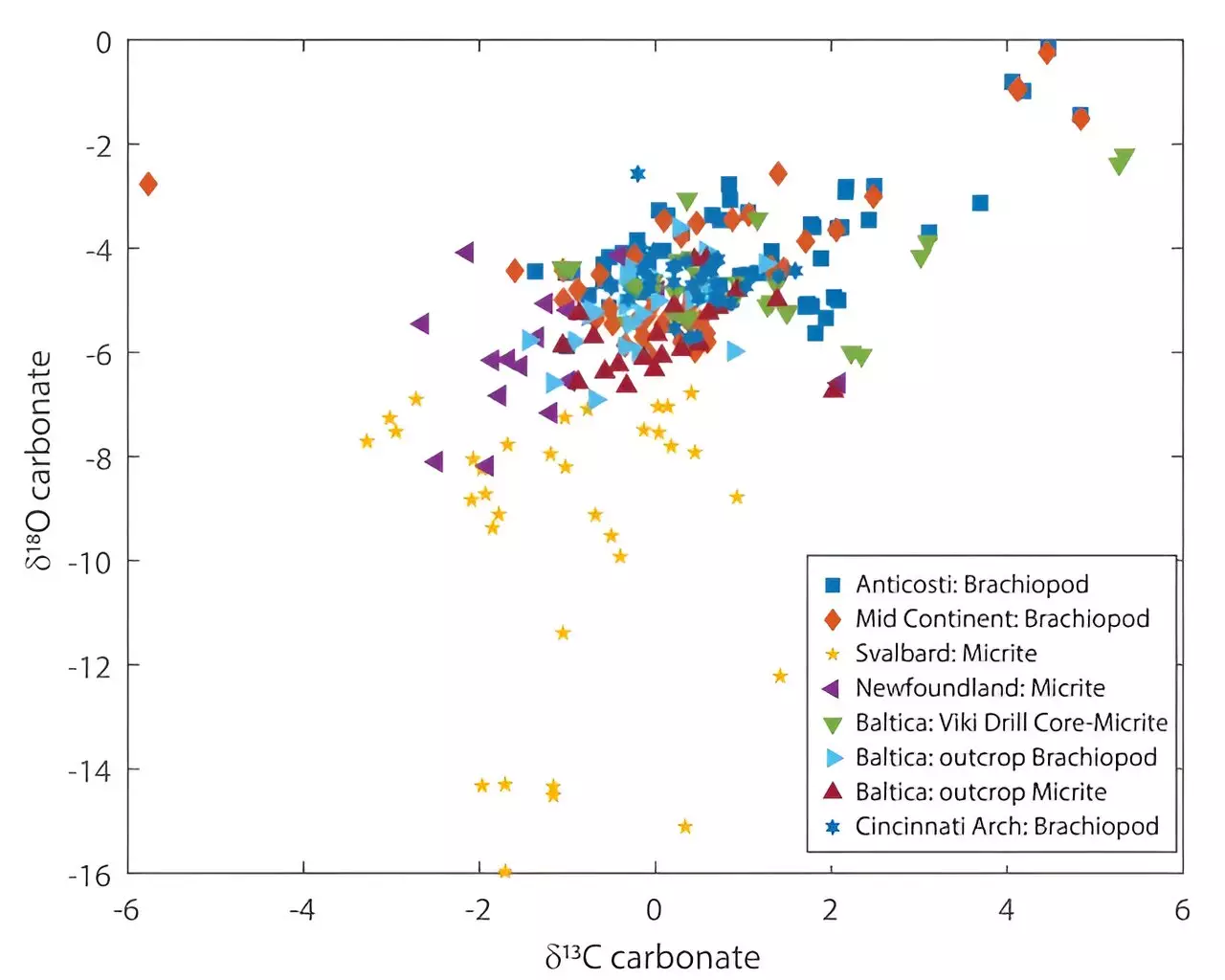The study of oceanic conditions has long fascinated scientists, particularly when it comes to understanding the intricacies of seawater chemistry over geological time scales. Recently, a collaborative international research effort has added new dimensions to this exploration by investigating the isotopic composition of seawater over the past 540 million years. Published in the esteemed Proceedings of the National Academy of Sciences, this study has reignited discussions in the scientific community regarding the ratio of oxygen isotopes, specifically the ratio of 16O to 18O, commonly denoted as δ18O.
For decades, the scientific discourse surrounding δ18O ratios in seawater has oscillated between two opposing viewpoints. Some researchers argue that the isotopic ratio has remained relatively stable throughout this extensive geological timeframe, while others advocate for the notion that it has undergone meaningful changes. The recent findings from this study lend credence to the latter perspective, suggesting that seawater has indeed experienced fluctuations in its oxygen isotope ratios, which could have significant implications for our understanding of ancient ocean temperatures and climate conditions.
To investigate this hypothesis, the research team focused on rock formations from the Ordovician period, a critical era in Earth’s geological history. Their approach involved extracting drill cores from the Baltic basin in Estonia and complementing this data with samples obtained from various above-ground locations. Employing clumped isotope thermometry, the researchers meticulously analyzed the binding of 13C and 18O encapsulated within carbonate minerals. This innovative technique, which hinges on the temperature-dependency of isotopic bonding, allows scientists to infer past ocean temperatures based on isotopic compositions found in ancient rocks.
The outcomes of their measurements have pivotal implications; they indicate that during the Ordovician, seawater was characterized by a lower δ18O ratio and cooler temperatures than what had been previously estimated. Such revelations not only illuminate aspects of ancient climatic conditions but also emphasize the importance of accurate δ18O ratios in models that predict historical ocean temperatures. The implications of understanding these ratios extend beyond mere academic curiosity; they offer insights into Earth’s climatic history that could inform current models of climate change and oceanic behavior.
Despite these significant findings, the authors themselves caution that this study does not provide irrefutable proof of changing δ18O ratios over the past 540 million years. The debate about oxygen isotopic changes is far from settled, necessitating further research and evidence to support these assertions. As the quest for answers continues, the scientific community remains engaged in discussions that bridge geology, oceanography, and climate science, underscoring the complexity of Earth’s climatic systems. Ultimately, this study serves as a noteworthy chapter in the ongoing inquiry into the dynamic aspects of Earth’s oceans and their broader implications for understanding historical climate shifts.


Leave a Reply